On our first full day in Rome Amanda, Jen and I left our apartment early and walked to Vatican City, where we joined the tour group Enjoy Rome led by a lovely British lady named Agnes.
During this three-hour tour we visited the Vatican Museums, which includes The Sistine Chapel, and St. Peter’s Basilica.
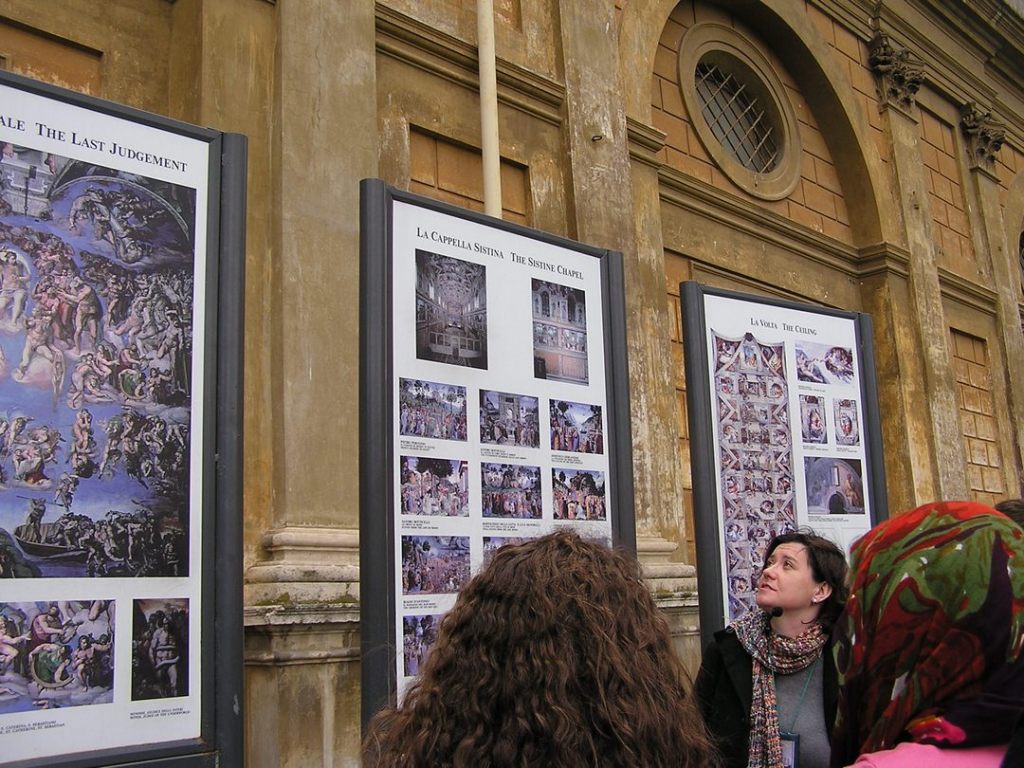
While I was a bit too weary to write much in my journal, I did take a few photos of our tour experience. (These were taken on an Olympus point-and-shoot camera; please forgive the amateur quality of the photos.)
The information below was gleaned from Let’s Go Italy guidebook (2009 edition) a well as an online search of www.Vatican.com and www.Rome.net
Vatican City
Vatican City, a sovereign city-state situated in a walled enclave inside the city of Rome, is the administrative and spiritual center of the Roman Catholic Church.
With a population of less than 1000 and at approximately 0.44 square kilometers (about 110 acres) in size, Vatican City is the smallest internationally recognized independent state in the world. It has its own national anthem, flag, currency and postal service.

The Vatican has generally been the residence of the Pope since 1337. The Pontifical Swiss Guard is in charge of the security of the Vatican and the Pope’s personal safety. The Pontifical Swiss Guard has been filling this duty since the 16th century.
The entire Vatican State is acknowledged as a UNESCO World Heritage site since 1984.
Sistine Chapel
Since it’s completion in the 16th century, the Sistine Chapel – named for its founder, Pope Sixtus IV – has been the site of the College of Cardinals’ election of new popes.
Michelangelo’s ceiling, the pinnacle of artistic creation, gleams from its 20-year restoration, which ended in 1999. The simple compositions and vibrant colors hover above, each section depicting a story from the book of Genesis.
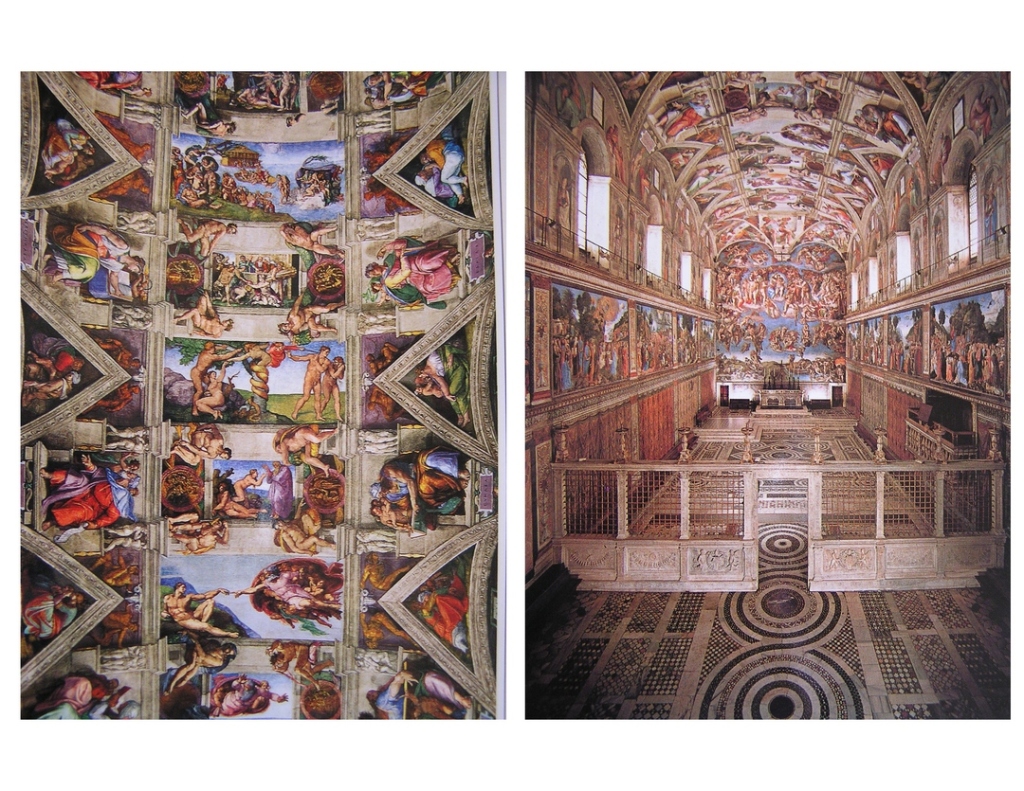
Michelangelo painted the masterpiece by standing on a platform and craning backwards – he never recovered from the strain to his neck and eyes.
The Last Judgment fills the altar wall; the figure of Christ as judge lingers in the upper center, surrounded by his saintly entourage and the supplicant Mary.
Sitting is only allowed on the benches along the side. Guards will ask you to be silent, as the chapel is a holy place. Photography is not allowed. (The images above are postcards.)
St. Peter’s Basilica
St. Peter’s Basilica is one of the holiest temples for Christendom and one of the largest churches in the world.

The Basilica was named after Saint Peter, one of the twelve disciples of Jesus, who became one of the founders of the Catholic Church. He is buried where the Basilica now stands.
The Basilica houses extremely impressive pieces of art, including St. Peter’s Baldachin, a large bronze baldachin designed by Bernini, The Pietà, a sculpture by Michelangelo, and the statue of St. Peter on his throne. St. Peter’s right foot has been worn down due to the touches of the devoted.

The Dome
High above the altar rises one of the most impressive parts of the Basilica, Michelangelo’s dome. It is similar in design to the circular dome of the Pantheon. Out of reverence for that ancient architectural wonder, though, Michelangelo is said to have made the cupola a meter shorter in diameter than the Pantheon’s.
This dome has served as inspiration for many other cathedrals and buildings; for example, the Capitol in Washington DC and St. Paul’s Cathedral in London.

Karyn and I later climbed the 551 steps to get to the top of the Dome. This gave us a spectacular bird’s eye view of Rome.
Although we chose not to use it, there is a lift that goes to the interior balcony at the base of the dome. (This allows you to skip the first 231 steps.)
According to www.Romewise.com this portion of the ascent is wheelchair-accessible.
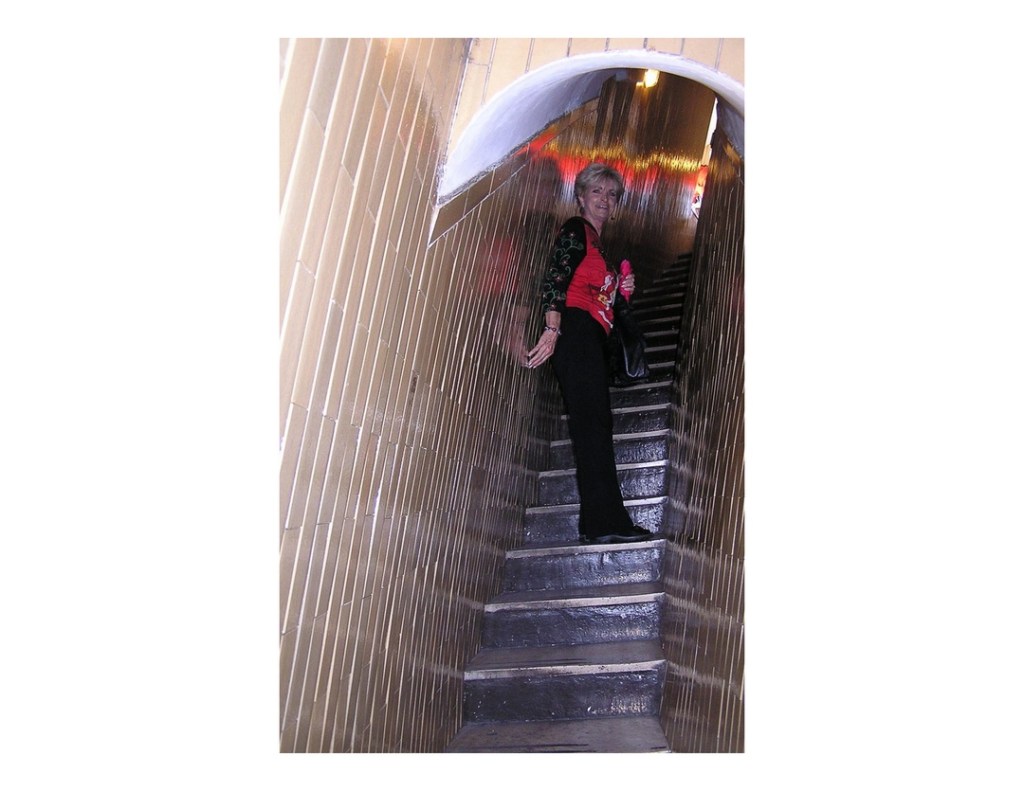
The remaining 320 steps are taken on a narrow spiral staircase to the top. (It’s important to note that once you start up you cannot turn around and go back down.)
As you can see, the climb was absolutely worth the view!

Piazza San Pietro
Statues of Christ, John the Baptist, and all of the apostles except Peter are on top of the Basilica.

The famous artist Bernini’s colonnade around Piazza San Pietro is lined with the statutes of 140 saints perched around the perimeter.
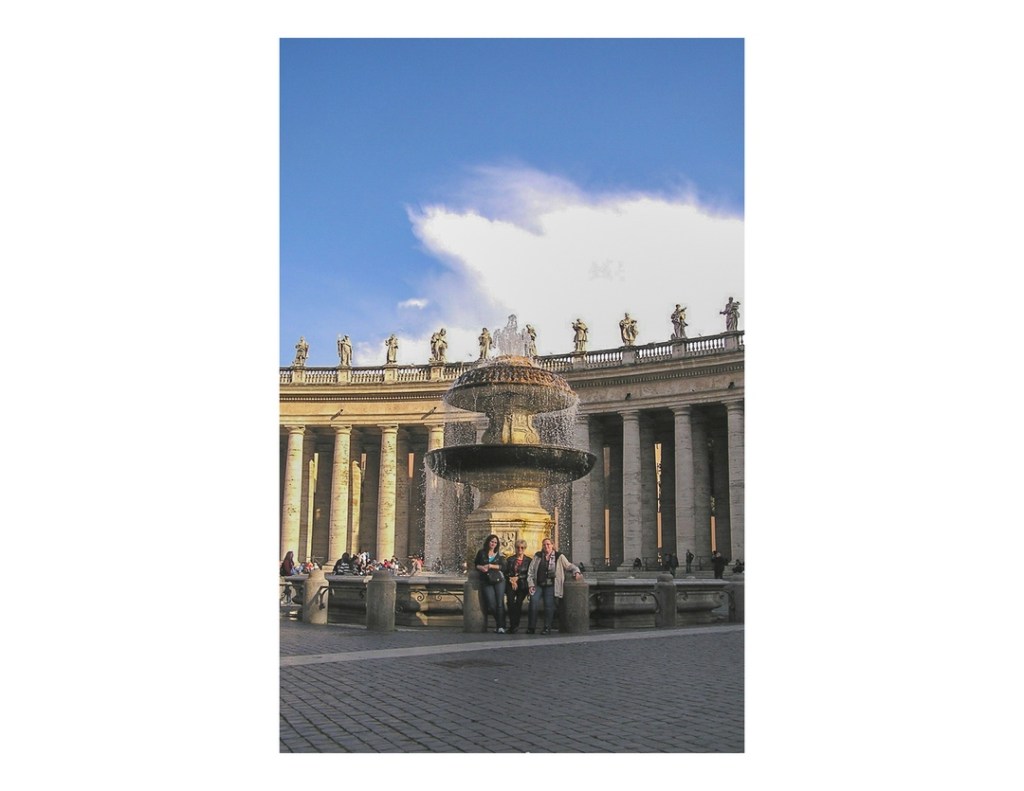
In warm months the Pope holds papal audiences on a platform in the piazza on Wednesday mornings. (We were fortunate enough to attend; I’ll share that experience in a future post.)
Vatican Museums
Although we began our day by touring the Musei Vaticani, I have saved those photos for last. There are more than two dozen museums, and so much to see that one visit certainly was not sufficient. I look forward to returning in the future. And I highly recommend the Enjoy Rome tour (linked above).
In the meantime, here are a few images my granddaughter and I took on our little point-and-shoot cameras. I hope they will spark your desire to go see them yourself!


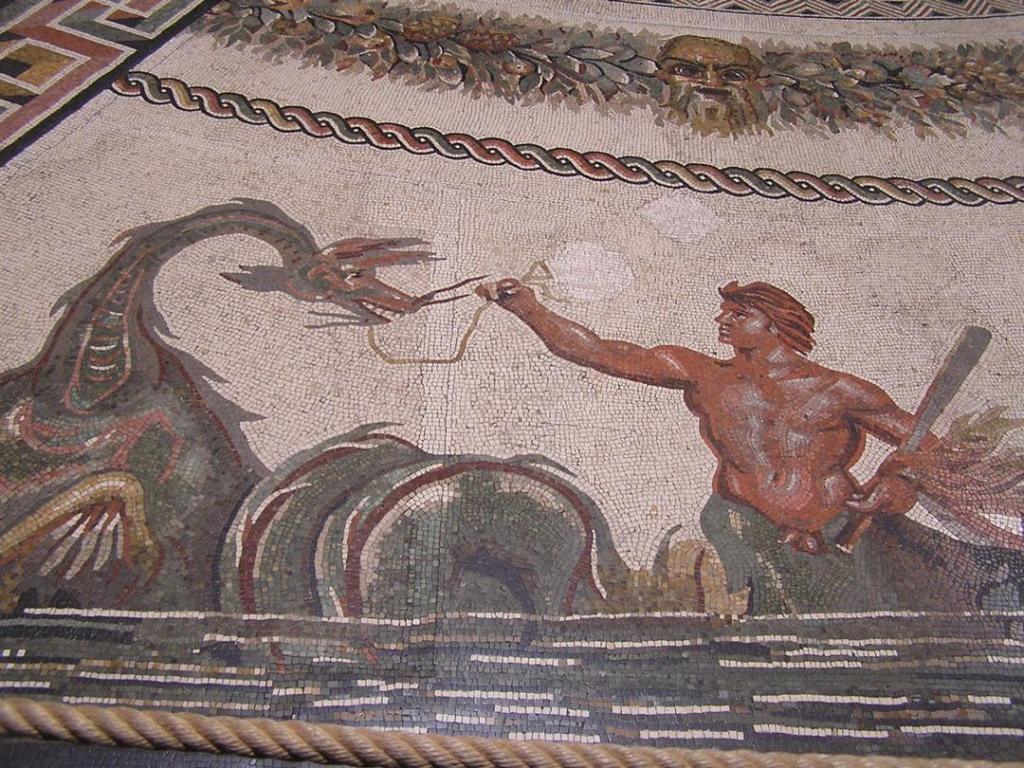


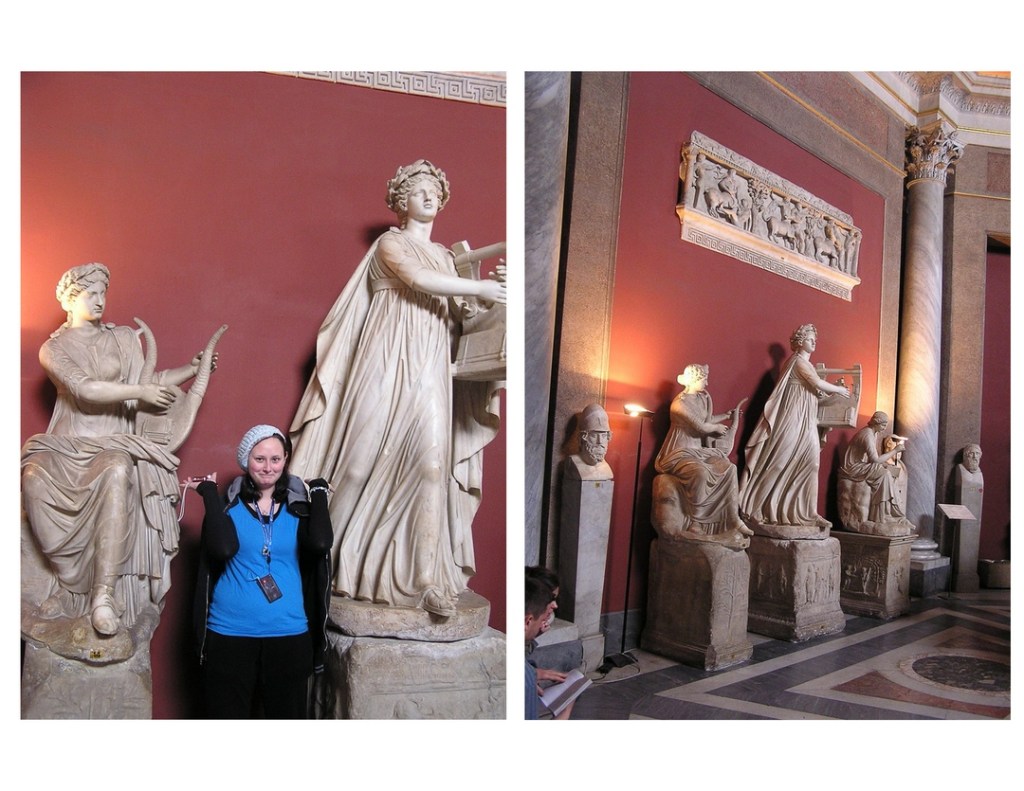

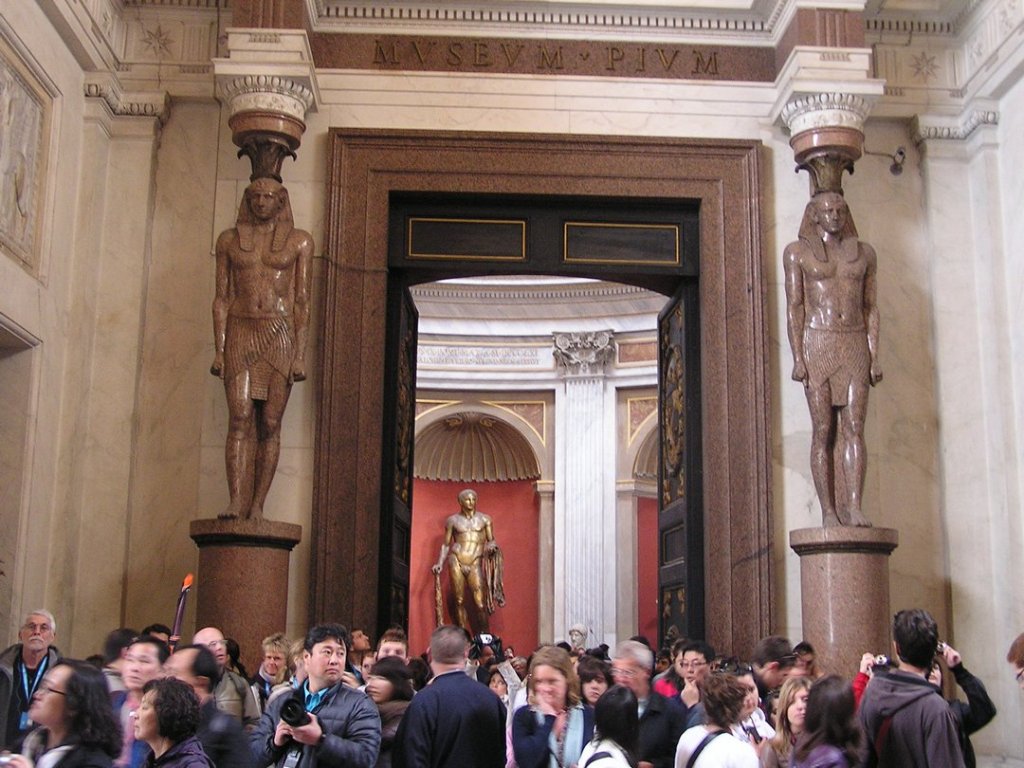



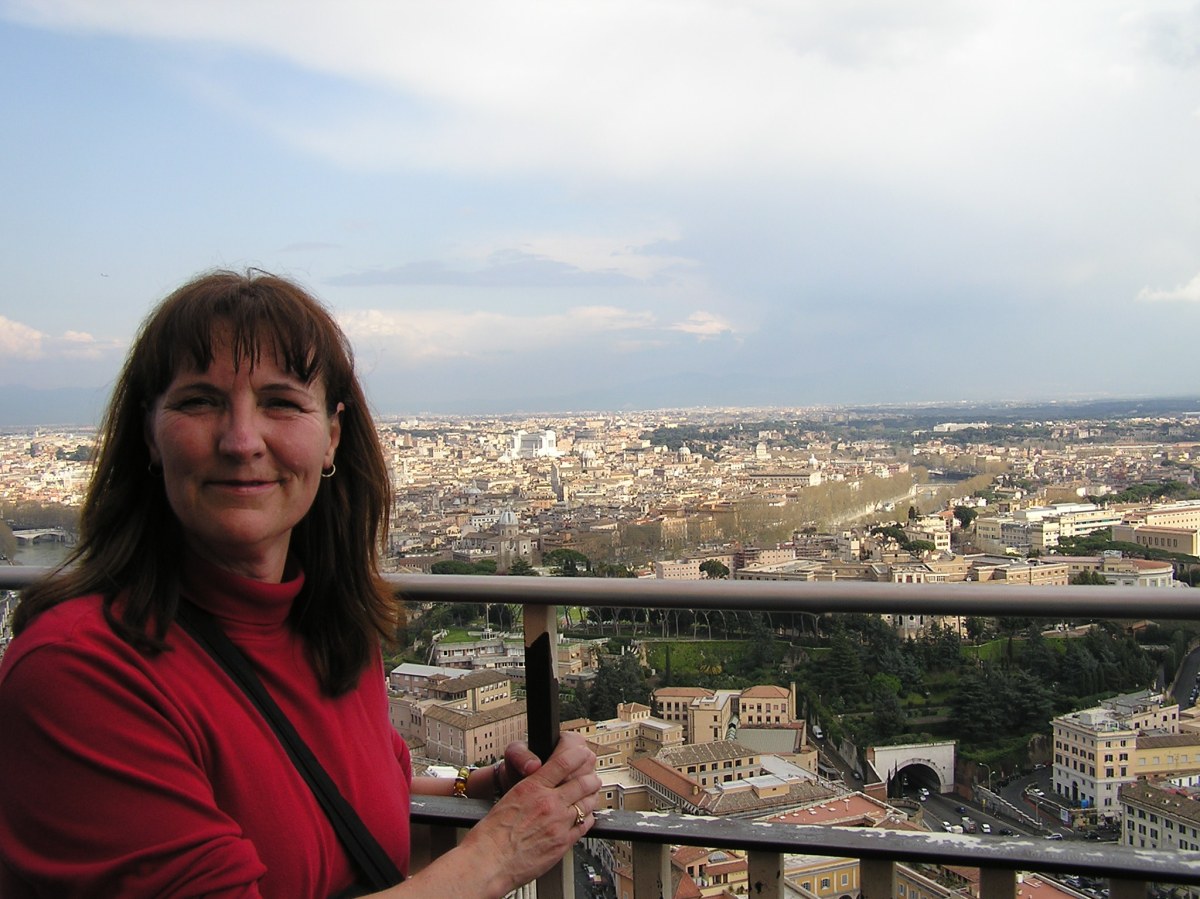

2 replies on “First Day in Rome – Vatican City”
This is an amazing museum with so many masterpieces. I really enjoyed visiting it. We went to the Dome too. The view was spectacular. Your post brought good memories. Thank you!
LikeLike
Thank you, again, Jeri, for helping me to relive my trip to Italy. The Sistine Chapel is forever etched in my memory. Thank you.
LikeLike